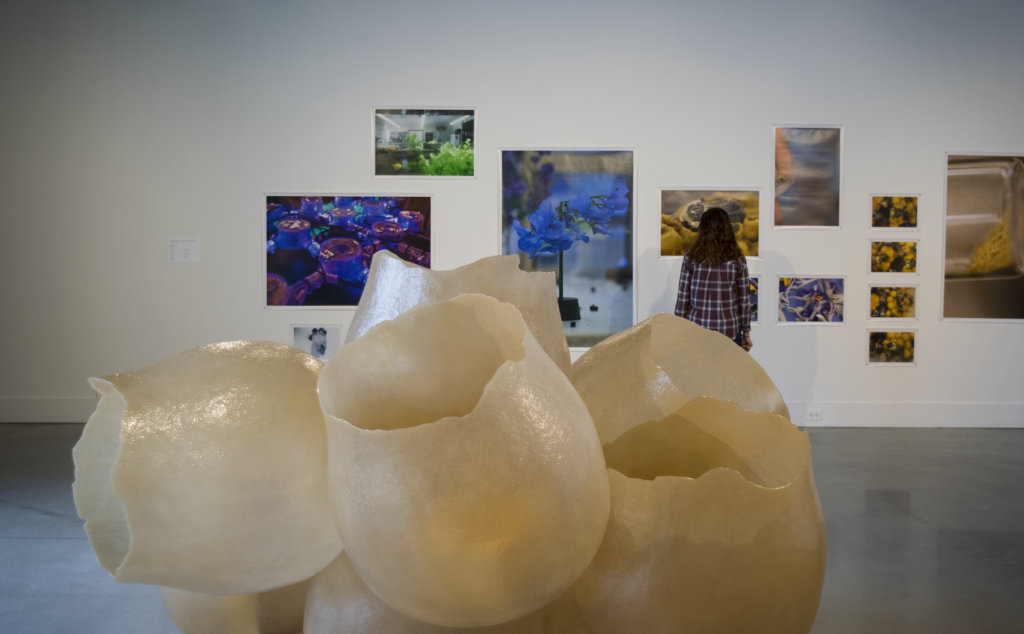By Mia Ingui
Opinions Editor
At 3:55 p.m., the room was buzzing.
At 4 p.m., Margaret Pezalla-Granlund, the art director of TCNJ Art Gallery and the Sarnoff Collection, silenced the audience abuzz with excitement and welcomed them to the opening of “A Better Nectar,” the multisensory exhibition developed by Los Angeles artist Jessica Rath.
Pezalla-Granlund introduced Rath, telling pieces of her story to the audience. Rath worked tirelessly for the last decade on the groundbreaking exhibit that showcases bees, who are responsible for pollinating 30 percent of all consumed food. She became especially interested in pollinator-flower communication, as well as the musical world of both the honey and bumble bees.
So, she decided to team up with composer Robert Hoehn to bring the multisensory world of honeybee pollination to life on a human-sized scale.
“I had an idea a long time ago of doing a human-scale honeybee hive and making it a multisensory piece,” Rath said. “It uses sound to connect all living beings as a colony.”
Pezalla-Granlund told the audience that Rath has been hard at work since the beginning of the academic year in order bring this exhibition to campus.
Since it is science displayed through art, the exhibit was a collaborative project between several different fields.
“For me, ‘A Better Nectar’ is a really compelling example of how art and science can work together,” Pezalla-Granlund said.
Pezalla-Granlund introduced the artist, Rath, and her partner on the project, Hoehn, who acted as musical director and composer.
Rath began to tell their story. While the project was still in the works, Rath and Hoehn were outside when a swarm of bees came fluttering down the street.
“We took that as a good omen,” Hoehn said.
The pair were first interested in the honeybees and how Colony Collapse Disorder affects the future of these important pollinators. Their exhibit is inspired by the daily pattern of bees, “translated to a human scale, so that it can be something we understand,” Rath said. “(The exhibit) is scientific information combined with making a poetic gesture.”
Rath believes the way to understand the world of the bees is to bring it to life on a human scale.
“You have to have different sensory experiences,” she said. “Your world is a façade created by your sensory perception. There are millions of other species who are having much different experiences.”
The exhibit consists of two sculptural structures. One of them, called “Resonant Nest,” is a sculpture depicting a bee nest with interactive acoustics, creating an auditory experience for human viewers.

It is crafted from spun fiberglass whipped around a plug mold that was scaled to a human’s actual size. This nest tracks the daily cycle of the hive based on the weather. If the temperature outside is a chilly 30 degrees, then the bees would be in a huddle to keep warm, and those noises will emit from the nest sculpture.
“I highly recommend sticking your head inside,” Rath said.
The second sculpture, “Staminal Evolution,” was inspired by flora that requires “buzz pollination,” which is when bees buzz at a certain frequency to obtain the desired amount of pollen.
“A Better Nectar” also includes a research station, where pollen can be viewed under a microscope, as well as Rath’s photo essay of the researcher’s bee experiment.
The exhibit will be on display in TCNJ Gallery until April 9.







